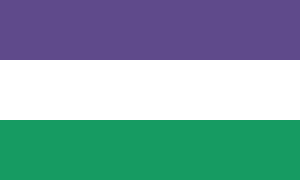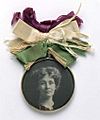Suffragette facts for kids

A suffragette was a woman who actively fought for the right to vote in public elections. This happened in the early 1900s, especially in the United Kingdom. They used the slogan "Votes for Women." The term "suffragette" mostly refers to members of the British Women's Social and Political Union (WSPU). This group was only for women and was started in 1903 by Emmeline Pankhurst.
In 1906, a newspaper reporter first used the word suffragette for the WSPU. It came from "suffragist," which meant anyone who supported voting rights. The reporter used it to make fun of the women. But the women liked the new name. They even used it for their own newspaper.
Contents
Why Did They Fight for Votes?
By the late 1800s, women in several countries had already won the right to vote. For example, New Zealand was the first self-governing country to let all women over 21 vote in 1893. But by 1903, women in Britain still could not vote.
Emmeline Pankhurst believed women had to take action themselves. The WSPU's motto became "deeds, not words." This meant they believed in taking strong actions, not just talking.
Their Bold Actions
The suffragettes used many different ways to protest. They would shout at politicians during speeches. They tried to enter the Parliament building. They were sometimes attacked by the police during their protests.
They chained themselves to railings to stop things from happening. They also broke windows as a way to show their anger. Some suffragettes even carried out a nationwide campaign that involved damaging property. This caused a lot of anger and ridicule in the media.
When suffragettes were put in prison, many of them went on hunger strike. This meant they refused to eat for days or even weeks. The government responded by force-feeding them. This was a very difficult and painful process. Evaline Hilda Burkitt was the first suffragette to be force-fed.
A very famous event happened in 1913. A suffragette named Emily Davison ran in front of the king's horse at the 1913 Epsom Derby race. She died from her injuries. This event made headlines all over the world.
Not all suffragettes agreed with every action taken by the WSPU. Some groups broke away, and even within the WSPU, not everyone supported the most direct and sometimes violent actions.
The Fight Continues
The suffragette campaign stopped when World War I began in 1914. After the war, in 1918, a new law was passed. This law, called the Representation of the People Act 1918, gave some women the right to vote. It allowed women over 30 who owned property to vote.
Ten years later, in 1928, women finally gained equal voting rights with men. The Representation of the People (Equal Franchise) Act 1928 gave all women the right to vote at age 21, just like men.
Related pages
Images for kids
-
Memorial edition of The Suffragette newspaper dedicated to Emily Davison
-
Emmeline Pankhurst was the most prominent of Britain's suffragettes.
-
Pendant presented to Louise Eates in 1909
-
Vida Goldstein was the first woman in the British Empire to stand for election to a national parliament.
-
Constance, Countess Markievicz, was the first woman elected to the British House of Commons.
-
Portrait badge of Emmeline Pankhurst (c. 1909) sold in large numbers by the WSPU to raise funds
-
1910 Suffragette calendar held in the collections of the Herbert Art Gallery & Museum, Coventry
See also
 In Spanish: Suffragette para niños
In Spanish: Suffragette para niños

















